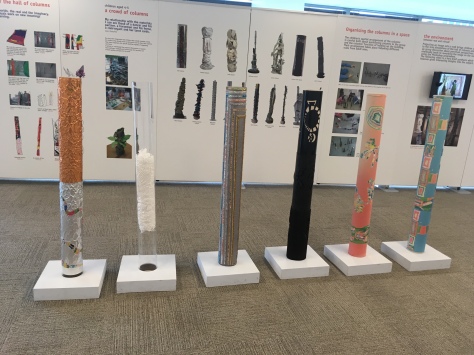It is 13 years since I last visited the Reggio exhibition. Education and childhood have evolved dramatically in that time. I was interested to see how the schools of Reggio Emilia have adapted to meet the interests and fascinations of this new generation.
The projects and learning I observed 13 years ago embraced the physical world. Investigations were made through exploring physical objects and environments, through discussion and experimentation, using art, photography, written and spoken word. The documentation of more recent projects followed a similar pattern, except for one key difference. The schools of Reggio Emilio are now embracing technology as a tool for learning and artistic expression. This is not a piecemeal attempt to use technology to teach concepts, but rather a way of using new ways of investigating and deepening knowledge and curiosity, that were not possible before. They have fully embraced it as one of the hundred languages.
Take for example, investigations that occurred during the building of the Malaguzzi centre. The children were taken into the space. They ran and danced around the pillars, making patterns of movement. They were then invited to design their own pillars. Once the designs were completed, they were projected onto a large screen containing an image of the Malaguzzi centre. The children saw, that in the image of the Malaguzzi centre, some of the pillars looked smaller than the others. “Were they smaller?” they asked, “or did they just appear that way?” The children’s pillars all looked the same size when they were added to the image, so they used Photoshop to shrink some of the images and make a realistic picture. I have often seen images of how the Reggio schools use projectors to aid learning but the addition of computer technology added a whole new angle to the learning.

In another project, the children were fascinated by the sound their feet made on the metal stairs. They decided to give the gift of sound to the stairs. To achieve this, they tested ways to make different sounds by changing shoes and using a variety of movements. The sounds were then recorded.
The children decided how they might be able to annotate the individual sounds and used the symbols to create a sequenced map of sound. The children drew a picture of the steps and scanned it into the computer. Using music software, they added individual sounds to each stair to create their desired sequence.
I love the way these projects can take an idea further than they ever could before. In the past the discussion and investigation would have been similar, representation in art would also have been used, but it would not have been possible to make a working model.
Many educators would uphold the Reggio approach as an example of why technology isn’t necessary in early education. Yet, when it is used as one of the hundred languages, it enriches the learning experience without reducing creativity, curiosity or discussion.
It makes me feel sad that schools are often encouraged and expected to use technology more in the classroom, but I rarely see it used in a creative or enriching way. I mostly see teachers using screens to impart knowledge or show examples. I have never seen teachers use music software to investigate the science of sound, use photoshop to create art projects or see it in any way as a tool for the children. It has certainly made me contemplate how we might ‘play’ with technology at home too.
The Wonders of Learning is in Boston until November 2018. Then it will move to Maddison WI.


